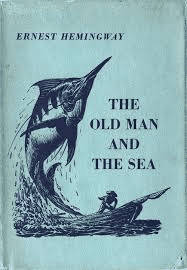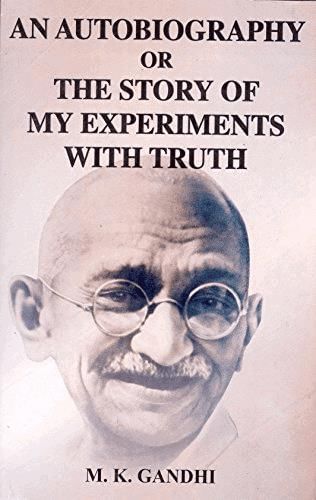Tariff and Non-Tariff Barriers | UGC NET Commerce Preparation Course PDF Download
| Table of contents |

|
| Tariff and Non-Tariff Barriers |

|
| Tariff Barriers |

|
| Non-Tariff Barriers |

|
| Wider Effects |

|
Tariff and Non-Tariff Barriers
Trade barriers are restrictions that governments place on international trade, primarily categorized into tariffs and non-tariff barriers.
Tariff Barriers
Tariffs are taxes imposed on imported goods, making them more expensive. This, in turn, makes domestic products relatively cheaper and more competitive. Essentially, tariffs are fees that countries charge on goods or services coming from abroad.
For example, if a business in Country A exports a product to Country B, Country B might impose a tariff, or tax, on that product. This makes the product more costly in Country B.
Types of Tariff Barriers:
- Import Duties: These increase the cost of imported goods and can distort trade by causing traders to shift imports to countries with lower duties, reducing overall trade efficiency.
- Import Quotas: These limit the number of goods that can be imported, creating artificial shortages and higher prices in the domestic market. Quotas also encourage importers to bid higher for the limited licenses.
- Surcharges: These are additional fees that increase the cost of imports beyond standard tariff levels, providing extra protection to local producers.
Example of Tariff Barrier:
If the United States (Country B) imposes a 10% tariff on cars imported from Germany (Country A), a car that costs $30,000 would see an additional $3,000 in tariffs, raising the total price to $33,000 in the U.S.
Non-Tariff Barriers

Non-tariff barriers are regulations or rules other than taxes that countries use to control trade. Although they don't involve direct taxes, they can still make it harder or more expensive for businesses to sell their products in other countries. Common types of non-tariff barriers include quotas, licensing requirements, and standards.
- Import Bans: These are restrictions that, while often intended for legitimate reasons, can be used as protectionist measures through technicalities. They also lead to higher costs for consumers who lose access to banned products.
- Product Standards: Foreign exporters may face significant costs to comply with unfamiliar product standards set by importing countries. This gives an advantage to domestic producers who are already familiar with these standards.
- Import Licenses: The power to approve or reject import licenses can be misused for protectionist purposes, creating uncertainty and increasing costs for importers.
- Export Subsidies: These can distort global prices and disadvantage exporters from countries that do not offer such subsidies, disrupting fair international competition.
Wider Effects
Trade barriers limit the benefits of trade based on comparative advantage, leading to reduced specialization and lower productivity and economic growth. Consumers face higher prices and fewer choices due to limited competition from imports, which especially impacts lower-income individuals who spend a significant portion of their income on protected goods. Exporters in countries with trade barriers may also face retaliation from other nations, affecting their competitiveness. Overall, if the most efficient producers are restricted from supplying goods and services globally, global living standards can decline.
In summary, while tariffs and non-tariff barriers are used to protect domestic industries by reducing foreign competition, they come with economic costs, including higher prices, reduced consumer choice, decreased trade, and lower productivity gains. To mitigate these issues, countries negotiate trade agreements and engage with organizations like the WTO to reduce unnecessary trade barriers while addressing legitimate concerns about unfair practices. The goal is to maximize the benefits of international trade.
 |
Download the notes
Tariff and Non-Tariff Barriers
|
Download as PDF |
Example of Tariffs on Imports
Consider two trading nations, Country A and Country B. Country A decides to impose a tariff on imported automobiles to support its domestic auto industry.
Before the Tariff:
- Country A imports cars from Country B at $20,000 each.
- Domestic car manufacturers in Country A are struggling to compete with these lower-priced imports.
Implementation of the Tariff:
- To protect its industry, Country A imposes a 20% tariff on imported automobiles.
After the Tariff:
- The price of each imported car from Country B rises to $24,000 (a 20% increase on $20,000).
- Domestic car manufacturers in Country A can now offer their cars at more competitive prices compared to the now more expensive imported cars.
Impact of the Tariff:
- Consumers in Country A face higher prices for imported cars, which increases their costs if they prefer foreign-made vehicles.
- Domestic car manufacturers benefit from reduced competition due to the higher cost of imports, potentially increasing their market share.
This example demonstrates how a tariff can alter trade dynamics by changing the relative prices of domestic and foreign goods. While tariffs are used to protect local industries, they can lead to higher consumer prices and potential retaliation from trading partners.
Conclusion
Though tariffs and non-tariff barriers can support domestic industries in the short term, they often result in higher prices for consumers, reduced economic productivity, and slower growth over time. Therefore, countries work to negotiate trade agreements to lower trade barriers. Organizations like the World Trade Organization (WTO) aim to create rules and resolve disputes related to trade barriers among member nations. The ultimate goal is to enhance the benefits of international trade and specialization through more open trade policies, while addressing legitimate concerns about unfair trade practices in a balanced way.
|
235 docs|166 tests
|
FAQs on Tariff and Non-Tariff Barriers - UGC NET Commerce Preparation Course
| 1. What are tariff barriers and how do they affect international trade? |  |
| 2. What are non-tariff barriers and how do they differ from tariff barriers? |  |
| 3. How do tariff and non-tariff barriers influence the global economy? |  |
| 4. What are some examples of tariff and non-tariff barriers commonly used by countries? |  |
| 5. How can countries mitigate the negative effects of tariff and non-tariff barriers on international trade? |  |




























